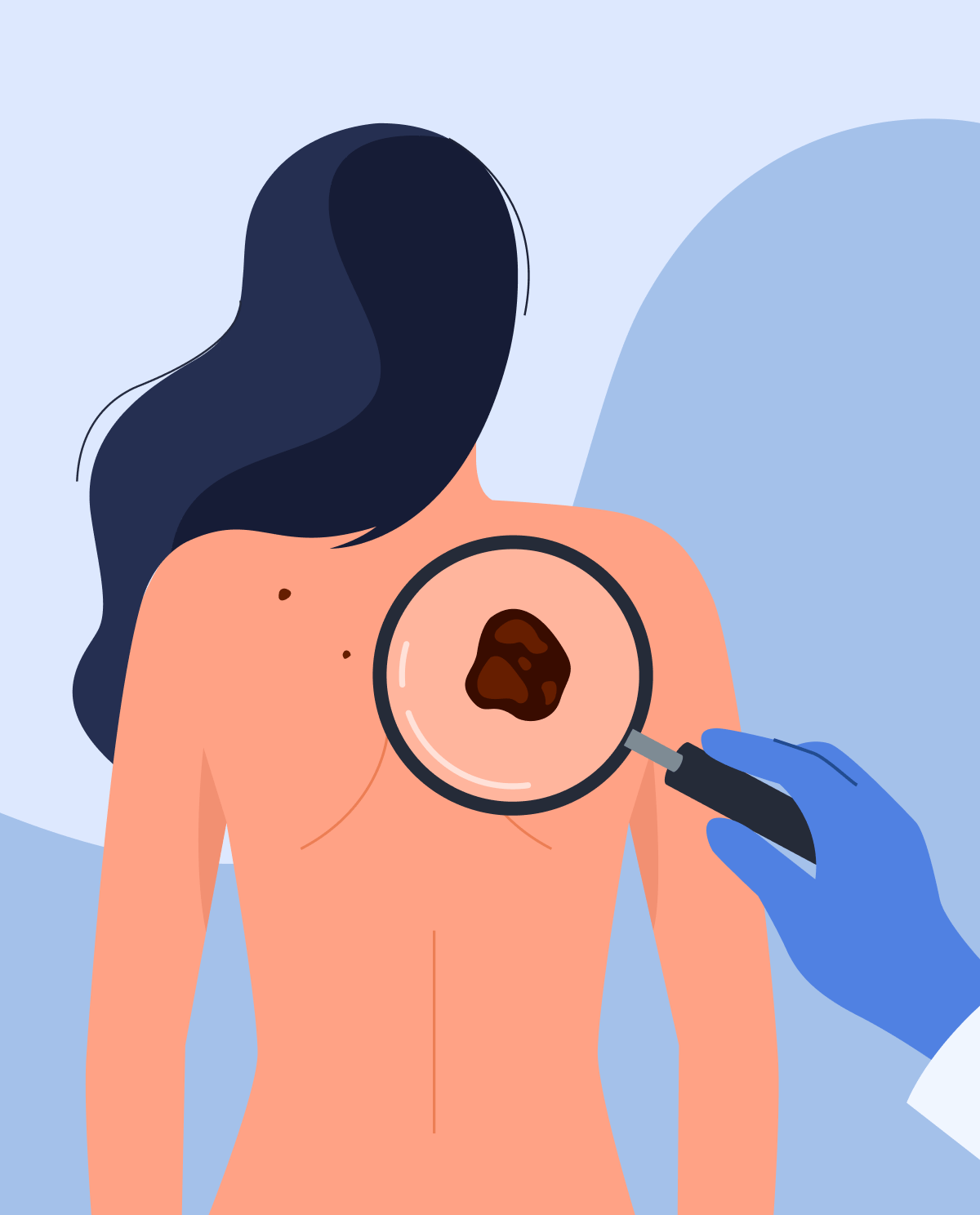Risks associated with skin cancer
- Possessing numerous or irregularly shaped moles.
- Being subjected to ultraviolet light therapy for treating skin diseases like eczema or psoriasis.
- Having light-colored eyes, blond or red hair, fair or freckled skin.
- Spending extended periods of time in the sun for work or leisure.
- Being prone to sunburns, or having a history of sunburns.
- Residing in a sunny or high-altitude area.
- The use tanning beds.
- Suffering from actinic keratosis, which are scaly, dark pink-to-brown patches of precancerous skin growths.
- Having a family background of skin cancer.
- Taking immune system-suppressing medications (after an organ transplant or for patients with skin conditions such as psoriasis).
Types of skin cancers and symptoms associated with them
- Basal cell cancer (BCC): generally develops on parts of your body that are exposed to the sun, such as your face or neck. It can manifest in various forms, including a pearly or waxy bump, a flat lesion that resembles a scar and has a flesh-colored or brown hue, or a sore that bleeds and forms a scab before returning.
- Squamous cell cancer (SCC): usually appears on parts of the body that are exposed to the sun, like the face, ears, and hands. Individuals with darker skin are at a higher risk of developing squamous cell carcinoma in areas that are not frequently exposed to the sun. Squamous cell carcinoma may appear in the form of a firm, red nodule or a flat lesion that has a scaly, crusted surface.
- Melanoma: it can occur anywhere on the body, including in existing moles. Men are most affected on the face and trunk, while women develop it on their legs. Skin not exposed to the sun may also be affected. Melanoma affects people of all skin tones and may appear as a large brownish spot or mole that changes in size, shape, color, or bleeds. It may also appear as a lesion with an irregular border and different color portions, or as dark lesions on the palms, soles, fingertips, or mucous membranes.
Diagnosis of skin cancer
- Skin examination.
- Skin biopsy.
Treatment
Small skin cancers that on the surface may not need any treatment beyond a skin biopsy that removes the entire growth. Other treatment modalities include the following:
- Cryotherapy (freezing),
- Surgical excision,
- Radiation therapy,
- Chemotherapy,
- Biological therapy.








